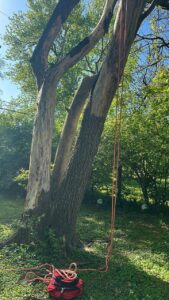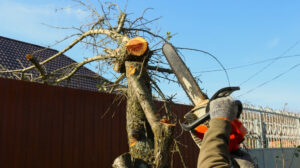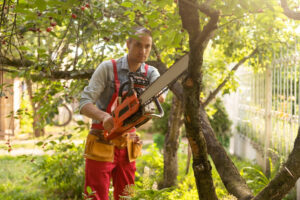The Importance of Tree Preservation in Richmond, VA: Protecting Our City’s Green Heritage
Trees stand as silent sentinels, guardians of our environment, silently providing us with a myriad of benefits that often go unnoticed. In Richmond, Virginia, these leafy giants play a pivotal role in shaping the city’s landscape, culture, and identity. As urbanization continues to encroach upon natural spaces, the importance of tree preservation becomes increasingly evident. This article delves into the significance of preserving Richmond’s trees, the benefits they bring, the threats they face, and the collective efforts to safeguard their future.
1. Richmond’s Arboreal Legacy
Richmond, known as the “City of Trees,” boasts a rich arboreal heritage dating back centuries. From the majestic oaks lining Monument Avenue to the towering tulip poplars of the James River Park System, trees are woven into the fabric of the city’s identity. Beyond their aesthetic appeal, these trees provide essential ecosystem services, purifying the air, mitigating urban heat island effects, and enhancing overall quality of life for residents.
2. The Benefits of Trees in Richmond
Trees in Richmond serve as nature’s multitaskers, offering a plethora of benefits to both the environment and its inhabitants. Their dense canopies provide shade, reducing temperatures and energy costs during scorching summers. In addition to their cooling effect, trees act as natural air purifiers, absorbing harmful pollutants and releasing oxygen into the atmosphere. This symbiotic relationship between trees and humans extends to mental and physical well-being, with studies showing that proximity to green spaces correlates with reduced stress levels and improved mental health.
Furthermore, Richmond’s urban forest contributes to the local economy, attracting tourists, increasing property values, and supporting wildlife habitats. From a cultural perspective, trees play a central role in community events and traditions, such as the annual Dominion Energy Christmas Parade, where thousands gather to admire the city’s illuminated trees and festive decorations.
3. Threats to Tree Preservation in Richmond
Despite their resilience, Richmond’s trees face an array of threats, ranging from urban development and invasive species to climate change and disease. The city’s rapid growth and expansion often come at the expense of its green spaces, with trees being cleared to make way for roads, buildings, and parking lots. Furthermore, exotic pests like the emerald ash borer pose a significant threat to native tree species, decimating populations and disrupting ecosystem balance.
Climate change exacerbates these challenges, with extreme weather events such as hurricanes and droughts taking a toll on tree health and vitality. Rising temperatures and altered precipitation patterns create stress for urban trees, making them more susceptible to pests, diseases, and environmental disturbances.
4. The Role of Tree Preservation in Richmond
Recognizing the importance of tree preservation, Richmond has implemented various initiatives and programs to protect its urban forest. The city’s Department of Parks, Recreation, and Community Facilities oversees the management of public green spaces, including tree planting, maintenance, and removal. Additionally, organizations like the Alliance for the Chesapeake Bay and the Virginia Department of Forestry collaborate with local stakeholders to promote tree planting and conservation efforts.
Individual residents also play a crucial role in tree preservation through community engagement and advocacy. Neighborhood associations, environmental groups, and volunteers organize tree planting events, conduct tree inventories, and advocate for policies that prioritize green infrastructure and urban forestry.
5. How to Contribute to Tree Preservation
Preserving Richmond’s trees requires collective action from individuals, communities, and policymakers alike. Here are some practical ways for residents to contribute to tree preservation efforts:
- Plant native trees in yards and public spaces to increase biodiversity and support local ecosystems.
- Practice proper tree care techniques, such as mulching, watering, and pruning, to promote tree health and longevity.
- Participate in tree planting events and volunteer programs organized by local conservation groups and government agencies.
- Advocate for tree-friendly policies and urban planning strategies that prioritize green spaces and sustainable development.
By taking these actions, residents can actively contribute to the preservation of Richmond’s urban forest and ensure a greener, healthier future for generations to come.
6. Tree Preservation Success Stories
Despite the challenges, Richmond has witnessed notable successes in tree preservation and restoration. The completion of the Virginia Capital Trail, a 52-mile multi-use path connecting Richmond to Williamsburg, included extensive tree planting efforts along its route, enhancing recreational opportunities and ecological connectivity.
Moreover, collaborative initiatives such as the RVA Green 2050 Master Plan aim to increase tree canopy coverage and promote equitable access to green spaces across the city. By engaging with diverse stakeholders and leveraging innovative strategies, these projects demonstrate the transformative power of community-driven conservation efforts.
7. The Future of Tree Preservation in Richmond
Looking ahead, the future of tree preservation in Richmond hinges on sustained commitment and proactive stewardship. As the city continues to evolve, it is imperative to prioritize green infrastructure and incorporate nature-based solutions into urban planning processes. By investing in tree preservation, Richmond can reap the long-term benefits of improved air quality, enhanced resilience to climate change, and strengthened community cohesion.
Neglecting the preservation of Richmond’s trees not only jeopardizes the city’s environmental sustainability but also undermines its cultural heritage and social well-being. Therefore, it is incumbent upon residents, businesses, and policymakers to embrace a shared responsibility for protecting and nurturing our urban forest for generations to come.
In conclusion, the importance of tree preservation in Richmond, VA, cannot be overstated. Beyond their aesthetic appeal, trees are vital components of the city’s ecosystem, economy, and cultural identity. By recognizing the value of our urban forest and taking proactive steps to conserve it, we can ensure a greener, healthier future for Richmond and its residents. Together, let us commit to preserving our city’s green heritage for generations to come.



